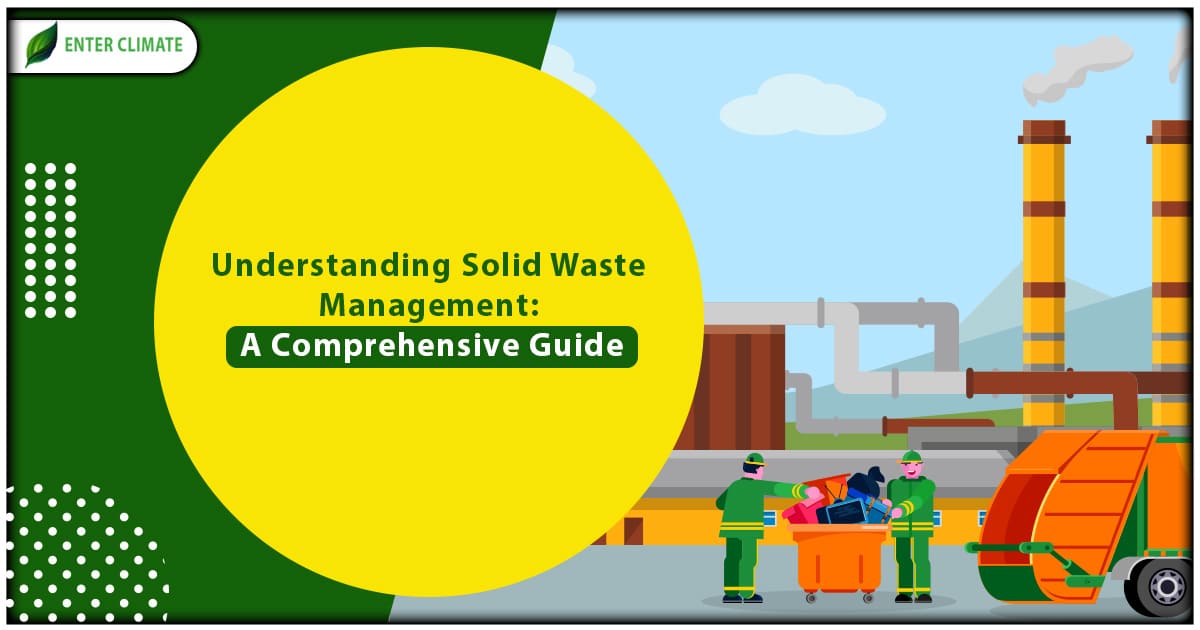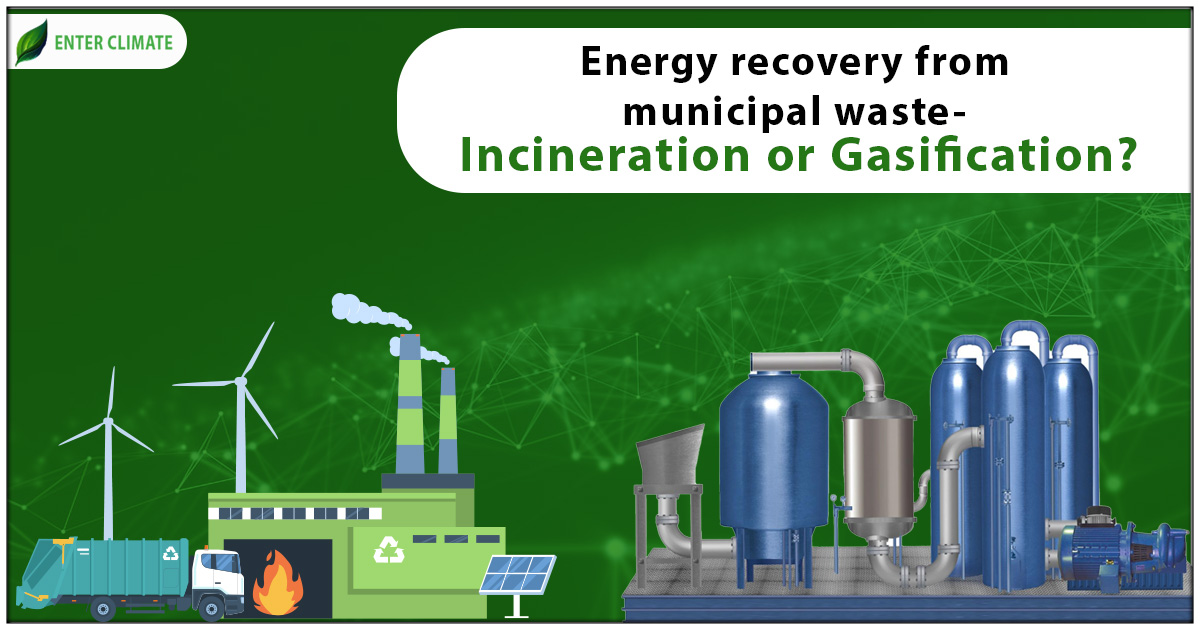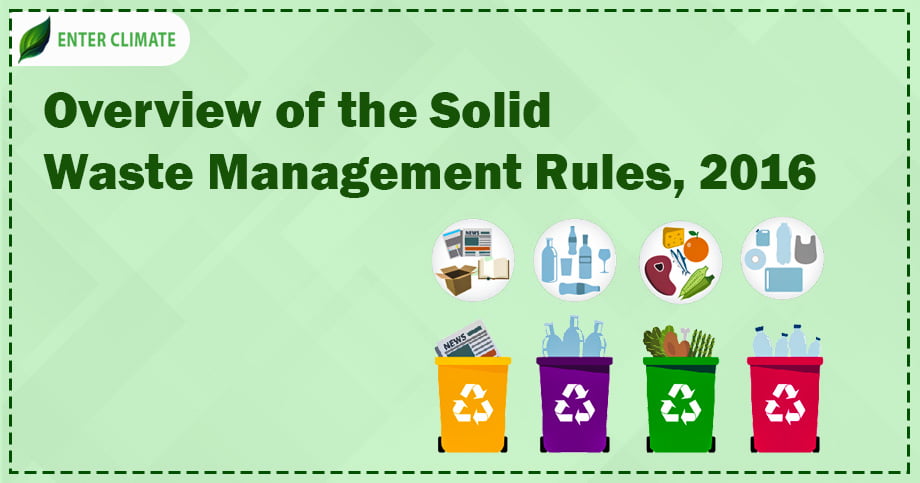Understanding Solid Waste Management: A Comprehensive Guide
 03 Aug, 2023
03 Aug, 2023 
Solid waste results from human or animal activities when they discard unwanted and useless materials. This waste is commonly generated from industrial, residential, and commercial activities in a specific area and can be managed in various ways. Waste classification is based on its composition, such as paper, plastic, glass, metal, and organic waste. Proper solid waste disposal is essential for ensuring environmentally responsible practices. Effectively managing solid waste is crucial for maintaining environmental cleanliness and should be integrated into overall environmental planning. Solid waste management encompasses the entire process of collecting, treating, and disposing of solid wastes. This process involves gathering waste from different sources, transporting it, treating it, analysing it, and ultimately disposing it safely. Strict adherence to regulations and guidelines is necessary to ensure the effectiveness of the waste management process and minimise its impact on the environment.
Important Features of Solid Waste Management
The key features of SWM are as follows:
- Due to rapid urbanisation, industrialisation, and a significant population increase in India, effectively managing solid waste will pose a major challenge for local municipal bodies as well as state governments, in the 21st century.
- Ensuring proper solid waste management is essential for safeguarding the health and well-being of urban residents.
- The urban poor, who often reside in informal settlements with limited or no access to solid waste collection, and in proximity to open landfills, are particularly susceptible to the consequences of inadequate waste management.
- The ‘Swachh Bharat Abhiyan’[1] was established to address these waste management issues and create public awareness about appropriately handling solid waste. Since its implementation, the concept of waste management has gained considerable traction.
Types of Solid Wastes
Solid waste can be categorised into the following:
- Household waste is also considered as municipal waste: This comprises household waste, debris from construction and demolition, sanitation residue, and waste from streets. Such waste mainly emanates from residential and commercial complexes. Due to increasing urbanisation, lifestyle changes, and altered food habits, the volume of municipal solid waste has been rising rapidly, causing changes in its composition. Over recent years, the consumer market has witnessed significant growth, resulting in using non-biodegradable materials such as cans, aluminium foils, and plastics for packaging. These items have severe environmental consequences. Some municipal areas in India have effectively banned the use of plastics, and the success of such measures can be observed in the Ladakh district, where plastic has been absent since a ban was imposed in 1998. Other states should follow this region’s example and prohibit using environmentally harmful items.
- Industrial waste identified as hazardous waste: Industrial and hospital waste is considered hazardous due to its potential inclusion of toxic substances. Certain types of household waste can also be hazardous. Hazardous wastes may pose severe threats to humans, animals, and plants, displaying corrosive, highly flammable, or explosive properties and reacting adversely when exposed to specific elements, such as gases. India generates approximately 7 million tonnes of hazardous waste each year, with a significant concentration in four states: Andhra Pradesh, Uttar Pradesh, Bihar and Tamil Nadu. Examples of household waste categorised as hazardous waste include old batteries, paint tins, old medicines, shoe polish and medicine bottles.
- Biomedical waste, also known as infectious waste: Hospital waste is produced during the diagnosis, treatment, immunisation of humans or animals, research activities in these fields, or the production and testing of biologicals. It may include sharps, soiled waste, disposables, anatomical waste, cultures, discarded medicines, chemical waste, etc. This waste consists of disposable syringes, swabs, bandages, body fluids, human excreta, etc. It poses significant infectious risks and can seriously threaten human health if not managed in a scientific and discerning manner. Rough estimates suggest that out of the 4 kg of waste generated in a hospital, at least 1 kg could be infectious.
Disposal of Waste
Waste handling and disposal methods vary across different countries. In India, the processes are tailored according to the source of solid waste and can be categorised as follows:
- Municipal Solid Waste (MSW): This encompasses biodegradable, recyclable, and hazardous domestic wastes. Biodegradable waste consists of decomposable materials like spoiled food, vegetable peels, and wet kitchen waste. Recyclable waste includes items such as plastic, while hazardous waste comprises items like bulbs and batteries.
- Hazardous Solid Waste: This refers to waste generated by industries, chemical factories, and medical facilities. Special procedures are required for the disposal of these hazardous wastes.
Regardless of the region, effective solid waste management is crucial for safe waste disposal, reducing environmental pollution, and preventing potential health hazards. Landfills are the most used method for solid waste disposal. Modern landfills are designed with consideration of various environmental factors and waste types to minimise pollution and health risks associated with waste disposal.
Effects of Poor Solid Waste Management
Improper handling of solid waste, especially by waste management entities, leads to the accumulation of waste, causing environmental and public concerns.
Large-scale dumping of garbage leads to the decay and decomposition of biodegradable materials under uncontrolled and unhygienic conditions, creating breeding grounds for disease-carrying insects and infectious organisms within a short period. This situation results in foul odours and impacts the area’s aesthetic appeal.
Industries generate solid waste containing toxic metals, chemicals, and hazardous materials, which, when released into the environment, pose biological and physicochemical problems. These chemicals can leach into the soil, contaminating groundwater and affecting soil productivity.
In some instances, hazardous waste may get mixed with regular waste and other combustible materials, complicating the disposal process and posing additional risks.
Burning paper and other scraps alongside hazardous waste produce dioxins and toxic gases, leading to health issues such as chronic diseases, skin infections, and cancer.
The adverse effects of improper solid waste management include:
- Air pollution
- Water pollution
- Soil contamination
- Spread of diseases
- Impact on biodiversity
- Unpleasant waste odours
- Emission of toxic gases
- Degradation of natural landscapes
Types of Solid Waste Management
- Landfill: This method involves burying waste in open areas outside the city. The disposal site is covered with soil to prevent contamination.
- Advantages: If managed properly, it provides a sanitary way of waste disposal.
- Drawbacks: It requires a reasonably large area.
- Incineration: This process entails controlled oxidation (burning/thermal treatment) of mainly organic compounds at high temperatures, resulting in thermal energy, CO2, and water.
- Advantages: Burning significantly reduces the volume of combustible waste.
- Drawbacks: It may produce smoke and fire hazards.
- Composting: Composting is a natural recycling process in which organic matter like leaves and food scraps is transformed into beneficial fertilisers that enrich the soil and promote plant growth.
- Advantages: It benefits crops and is eco-friendly.
- Drawbacks: Large-scale operations require skilled labour.
- Recycling: Recycling is the conversion of waste materials into new products. Examples include wood recycling, paper recycling, and glass recycling.
- Advantages: It is environmentally friendly.
- Drawbacks: Setting up recycling facilities can be expensive and may not be dependable during emergencies.
- Vermicomposting: Vermicomposting is a bio-conversion technique commonly used for solid waste management. Earthworms consume organic waste, reproduce, and produce vermicompost as by-products.
- Advantages: It reduces need for chemical fertilisers and enhances plant growth.
- Drawbacks: It is time-consuming, cost-ineffective, and requires extra care.
Procedure to apply for Waste Management Authorization under SWM Rules, 2016
Anyone engaging in waste management activities, such as solid waste management, must obtain authorisation from the Pollution Control Board (PCB).
This requires seeking prior approval from the state pollution board (SPCB) or pollution control committee by applying in Form I.
The Pollution Control Board will review the authorisation proposal and conduct necessary inquiries upon receiving the Form I application from the local body or any authorised agency.
Within 60 days, the Pollution Control Board can issue authorisation in Form II to the local body, facility operator, or any other authorised agency designated by the local body.
The authorisation will include compliance criteria, environmental standards outlined in Schedules I and II, and any other necessary conditions.
The SPCB/ PCC is responsible for monitoring environmental standards and ensuring adherence to the conditions stated in Schedule I and II for waste processing and disposal sites.
Documents required for Solid Waste Management Authorization
The documents required for SWM Authorizationare as follows:
- Aadhar Card: This document verifies the identity of the authorised signatory responsible for the waste management facility. It is essential for ensuring accountability and compliance with regulations.
- PAN Card: The Permanent Account Number (PAN) card is required to validate the financial details and taxation status of the authorised signatory.
- GST Certificate: The Goods and Services Tax (GST) certificate must confirm registration and compliance with GST regulations related to waste management operations.
- Proof of ownership of the site or rent/lease agreement: This document proves that the waste management facility has legal rights to operate on the site. It can be in the form of ownership documents or a valid rent/lease agreement with the property owner.
- Factory license/trade license: The factory or trade license is an official permit issued by the local government or regulatory authority, allowing the waste management facility to conduct its operations legally.
- Electricity bill: The electricity bill serves as proof of the facility’s address and confirms its operational status.
- Layout plan: The layout plan outlines the physical arrangement of the waste management facility, including waste storage areas, processing units, and other essential components. It helps the regulatory authorities assess the facility’s safety and environmental standards compliance.
- Process flow chart: The process flow chart depicts the steps followed in waste management operations, from waste collection to disposal or recycling. It helps the authorities understand the workflow and identify potential areas for improvement or compliance.
- Details of the machinery installed: This document provides information about the machinery and equipment used in the waste management facility. It ensures that the equipment is suitable for handling specific waste types and meets safety and environmental standards.
Conclusion
The increasing urbanisation, industrialisation, and population growth in India has posed significant challenges for waste management authorities. Improper disposal and handling of solid waste can lead to environmental pollution, health hazards, and degradation of natural resources. To address these challenges, various waste management methods have been developed, each with its benefits and limitations. Landfills, incineration, composting, recycling, and vermicomposting are some of the commonly used methods for managing solid waste. Obtaining authorisation from pollution control boards and adhering to environmental standards are essential for effective waste management. It is recommended to take expert advice while obtaining the Solid Waste Management Authorization to ensure the exact documents and certificates that would be essential for the grant of the authorisation from the Pollution Control Board.
FAQs
The four types of solid waste management are Municipal Solid Waste (MSW), Industrial Waste, Hazardous Waste, and Agricultural waste.
Examples of Solid Waste Management of solid waste can include source reduction, recycling, storage, collection, transportation, processing, and disposal.
The four types of waste management are Treatment of waste, Reduction of waste, Recycling of waste, and Disposal of waste.
Sources of waste can be classified into four types: Industrial Waste, Commercial Waste, Domestic Waste, and Agricultural Waste.
The 5 ways of solid waste management are by adhering to the five R’s of waste management: to reduce, reuse, recycle, recover, and handle residual waste appropriately.
The principle of getting started with the 7Rs: Rethink, Refuse, Reduce, Reuse, Repair, Regift, Recycle
The principles of solid waste are reducing waste at the source, recycling, processing waste to recover resources like materials and energy, transforming waste without resource recovery, and land disposal (landfilling).
The waste management process follows the 5R principle: reduce, reuse, recycle, recover, and residual management.
Solid waste management is of utmost significance in any locality to ensure the safe disposal of waste, minimise environmental pollution, and prevent potential health risks associated with improper waste handling.
The fundamental principles of solid waste management are based on the 3 Rs of waste management: Reduce, Reuse, and Recycle.
Read our Article: A Overview Of Solid Waste Management Rules, 2016
Categories
Latest Post
Air pollution Dispersion Modeling
Natural Disaster Risk Assessment
Endangered Species Protection
Aquifer Recharge Project
Sustainable Sanitation Solutions














